
views
Removing the Cells from the Beehive

Put on protective gear. Make sure that you are wearing long sleeves and pants, gloves, and a beekeeper’s mask and head cover before you get started. Your beekeeper’s mask should attach to your jacket so that there are no gaps between the collar and the brim of the hat. Opt for a ventilated beekeeper’s jacket or suit during warm weather. This will help to ensure that you are as comfortable as possible while tending your bees.
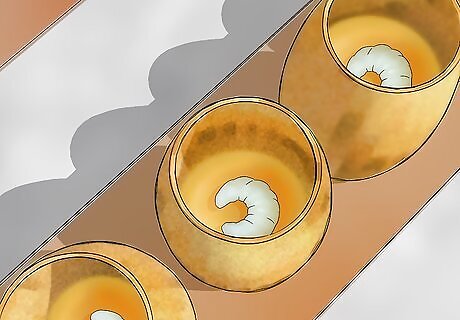
Wait until the larvae are 3 days old. It is best to time your royal jelly harvest for when the larvae are 3 days old. This will result in the highest yield of royal jelly in your harvest. Keep in mind that you can save the larvae and return them to the cells after you finish extracting the royal jelly, so be careful not to damage them.
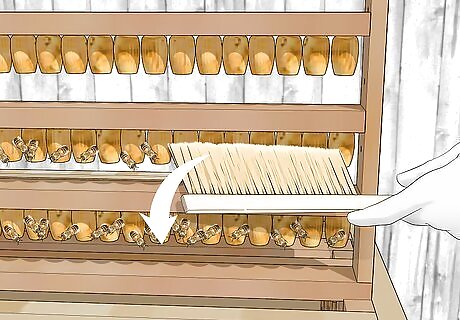
Pull out one of the frames and sweep away the bees. Remove the frame that contains the royal jelly cells and start sweeping away the bees that are clinging to it. Move slowly and gently to avoid stirring up the bees. It will probably take a few minutes to get all of the bees off because they will cling and some of them may fly back onto the cells.
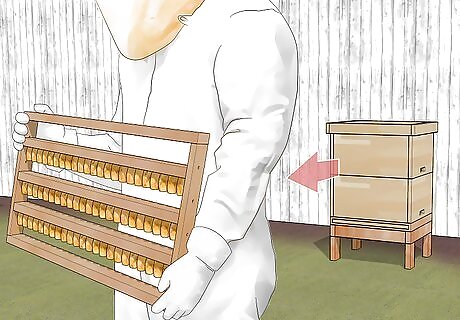
Take the frame somewhere away from the beehive. It is best to go indoors with the frame so that you can store the royal jelly that you extract, and also so that the bees will not continue to return to the cells. But at the very least, walk far away from the bee hives.
Extracting the Royal Jelly
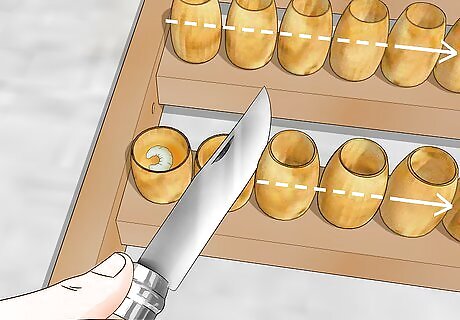
Use a knife to cut the open narrow part of each of the cells. There is a narrow end on each of the cells that is holding the larvae and jelly inside. Use a sharp knife to cut off these ends. Keep the flat edge of the knife flush with the edge of the cell as you cut. You can cut them off 1 at a time or cut several at once by running the knife down the edges of the cells.

Pull the larvae out of the cells using tweezers or small forceps. Look for the slightly coiled larvae in the center of each of the cells. It will look like a very fat, short worm. It is important to remove the larvae before you harvest the royal jelly. This will help to keep the jelly pure. Grasp the larvae with the tweezers or forceps and pull them out of each of the cells. Do not put the larvae into the same container as your royal jelly. Use a separate container for them.

Remove the remaining royal jelly from the cells with a small spatula. What is left in each of the cells is the royal jelly. Use a small spatula to scrape the jelly out. For very small amounts, you can also use a pipette to suck the jelly out of 1 cell at a time. This may take a while depending on how many cells are in the frame.

Place the royal jelly into a glass storage container. As you collect the jelly, place it into a collection container, such as a glass jar with a lid. If you are collecting a large amount of jelly at once, then you may want to put the container on ice to prevent it from spoiling. Royal jelly spoils within a couple of hours left unrefrigerated, so you may even want to collect smaller amounts at a time and place them into a refrigerator as you go.
Storing Royal Jelly
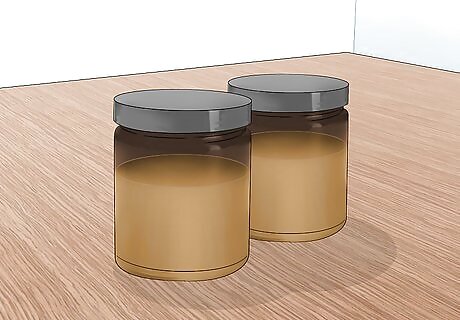
Transfer the royal jelly into dark glass vials. It is important to protect the royal jelly from light, so transfer the jelly from your collection container to a dark glass container right away. Use a pipette or small spatula to do this. Screw the lid shut tightly. This will help to prolong the shelf life of the jelly. Use freezer safe vials and leave about 0.5 in (1.3 cm) of space at the top of the vial if you plan to freeze the royal jelly. This will ensure that there is some extra space for the jelly to expand during the freezing process.
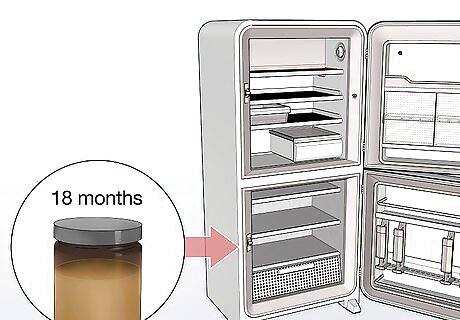
Refrigerate the jelly for up to 18 months. After you have transferred the jelly to dark glass containers, place them into a refrigerator between 0 to 5 °C (32 to 41 °F). This will protect the royal jelly from spoiling for up to 18 months.
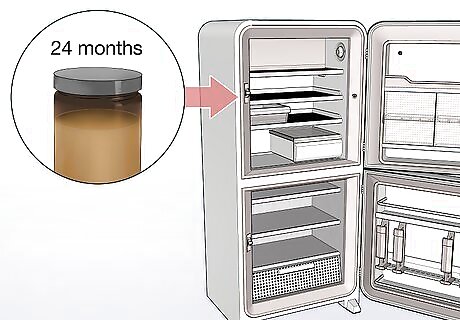
Freeze jelly for up to 24 months. Storing royal jelly at −17 °C (1 °F) or lower will prolong the shelf life even longer. If you want to ensure that your royal jelly will be viable for up to 24 months, then put the vials into a freezer to store them. Make sure that you purchase freezer-safe vials if you want to freeze the royal jelly. After the royal jelly has thawed, it should be stored in a refrigerator for no more than 12 months.












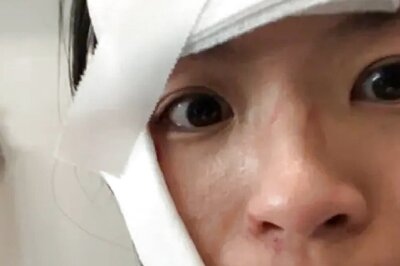







Comments
0 comment